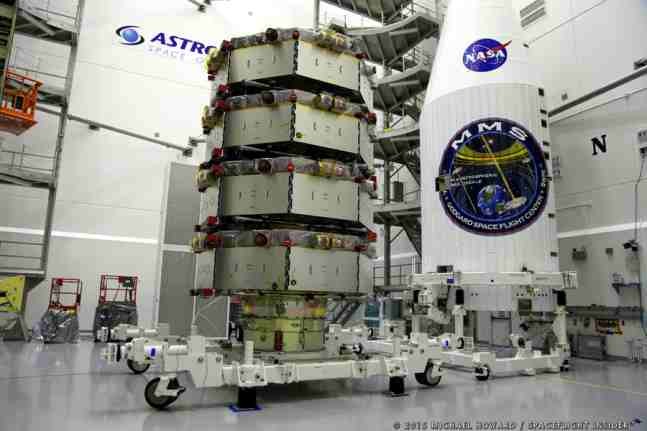A cosmic phenomenon involving the Earth's magnetic field, both potentially dangerous and dazzling, is the main focus of the newest scientific mission set to launch on Thursday.
The MMS or Magnetic Multiscale mission is composed of four satellites, NASA explained. Its purpose is to study magnetic reconnection, a process characterized by an explosive phenomenon that could send bursting particles toward Earth, possibly damaging the satellites. Magnetic reconnection is also the mechanism responsible for the northern and southern auroras, near the poles of the Earth.
A 195-foot tall satellite booster will launch the mission into Earth's highly elliptical orbit. The deployment of satellite Quartet starts an hour and 32 minutes into the flight and stops 15 minutes after.
The rocket will be flying 421 vehicle configuration for its fourth time in more than 50 flights. This time, it will feature two distinct stages, four-meter-diameter nose one, and two solid rocket boosters. Its launch pad is powered-off by an RD AMROSS RD-180 primary engine and a twin solid Aerojet Rocketdyne. Its upper Centaur stage is equipped with an Aerojet Rocketdyne RL10A.
Anyone could watch the MMS launch on Thursday through NASA's webcast at 8 p.m. March 12, EDT, Space shared. Lift-off is scheduled at 1044 p.m. EDT, around 2:44 a.m. March 13, GMT, made possible by an Atlas V, unmanned rocket. Today, NASA will hold a briefing webcast to orient the public about its mission.
The day's first available launch opportunity is at 10:44 p.m. and will conclude at 11:14 p.m. EDT. If the initial launch is successful, it will send the rocket on the equatorial orbit's eastern direction.



























